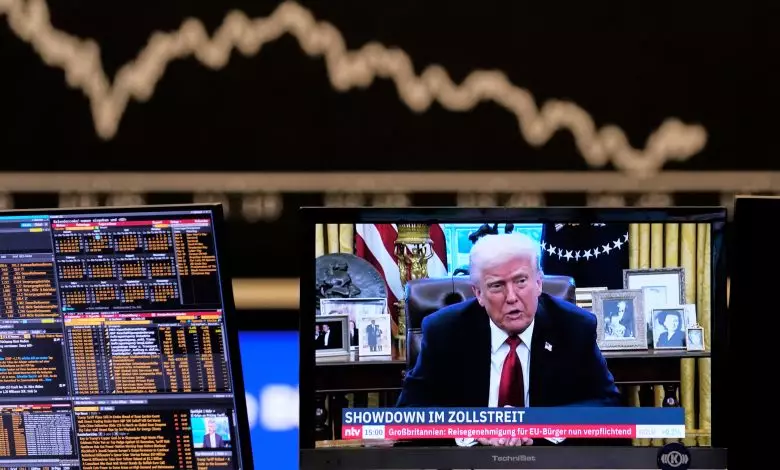Wall Street Sees Devastating Loss: $6.6 Trillion Disappears in 48 Hours, $11 Trillion Vanishes Since Trump’s Return
Market instability during the initial months of a presidency is not unusual, according to analysts; however, they note that the magnitude of this year's downturn is without precedent.

Since January 17—the Friday preceding Trump resuming his second term—around $11.1 trillion in market value has been deducted from U.S. stocks, as reported by Dow Jones Market Data.
In an unprecedented setback, a monumental $6.6 trillion vanished from shareholder value over the course of Thursday and Friday, representing the most significant two-day decline on record.
Financial markets experienced a significant shakeup midweek following the announcement by Trump of expansive new tariffs that surpassed forecasts, taking many investors by surprise. In reaction, there has been increased pressure from financial markets on the administration to either reduce the proposed tariffs or demonstrate tangible progress in trade negotiations.
“The markets are in dire need of clarity,” stated Kathleen Brooks, research director at XTB, in a commentary sent via email. She observed that by Friday, investor sentiment continued to be overwhelmingly negative despite Trump’s effort to soothe markets with a post on Truth Social describing a “productive phone call” with Vietnam’s leader. Although shares of Nike Inc. (NKE), which has substantial factory operations in Vietnam, experienced a temporary increase, the development did little to ease widespread market apprehensions.
By Friday afternoon, fears of a recession were intensifying despite the release of a robust March jobs report. Jay Woods, chief market strategist at Freedom Capital Markets, cautioned that aggressive measures could adversely impact not only the technology sector but the broader economy as well. Such developments, he suggested, might propel the nation into a recession and potentially mark the end of the current bull market.
By the end of the week, the S&P 500 managed to exceed the early-term losses experienced during the initial days of George W. Bush’s administration, which was also characterized by significant volatility in its first 75 days. Meanwhile, the Russell 2000 index, which concentrates on small-cap stocks, reported its most challenging start to a new presidential term in history, as per data from FactSet.
Since Inauguration Day, the Dow Jones Industrial Average has seen a decline of 11.9%, while the S&P 500 has decreased by 15.4%. The Nasdaq, which achieved a record close of 20,056.25 on February 19, has plummeted over 22%, marking its entry into bear market territory alongside the Russell 2000, which has fallen more than 25% from its peak on November 25.
Friday concluded the most challenging week for US stock markets since March 2020.
Market analysts have noted that early-stage market downturns during a presidency are not unusual, but the magnitude of this year’s losses is without precedent. Ryan Detrick from Carson Group highlighted that stock performance generally improves during the third and fourth years of a presidential term, while the first quarter of the first year often shows particularly subdued results.




